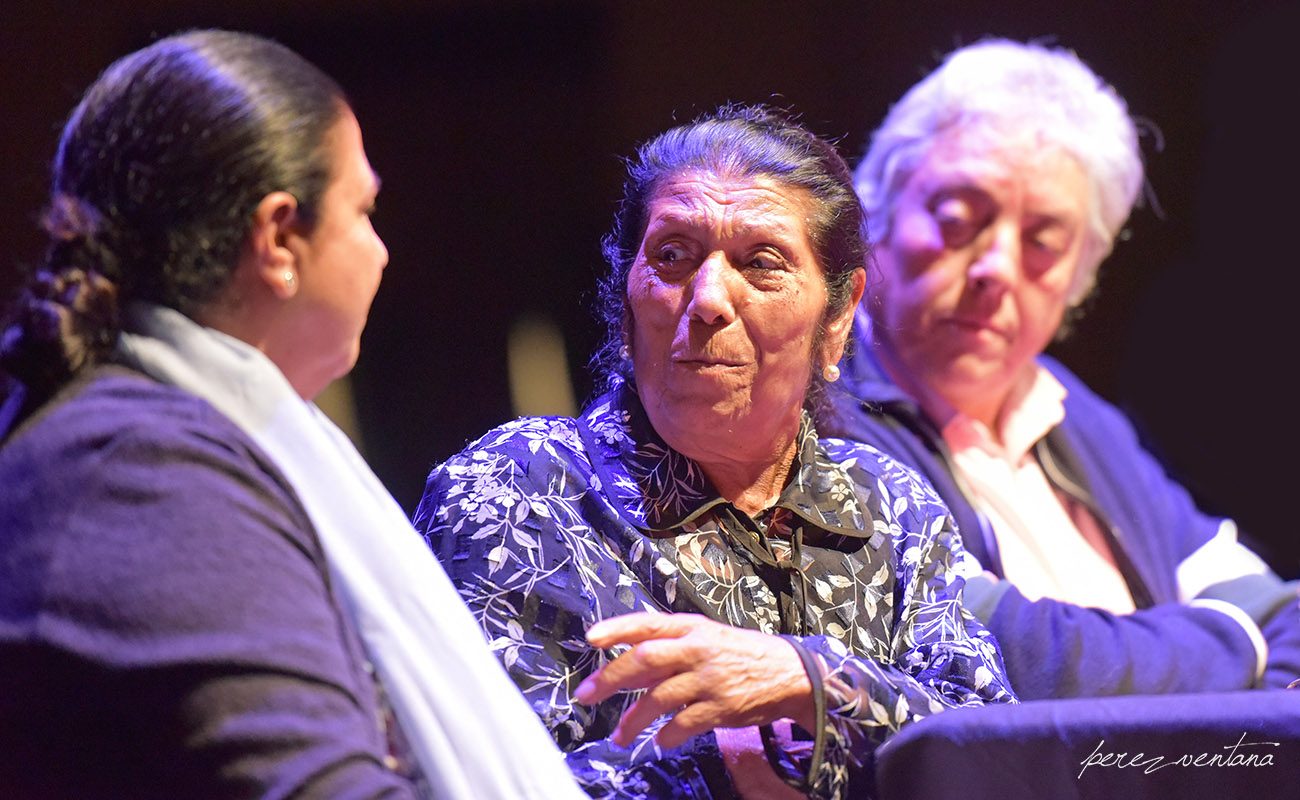Palmas a compás for Angelita Vargas
Her artistic career has been remarkable, a monument to fidelity, always in tune with her upbringing, her life experiences and her origins. So, let’s give a round of palmas a compás for Angelita and, aslo, for Utrera, which noticed that this great gypsy bailaora is still living and feeling.

Utrera is a town in the province of Seville that has its own, unique style of flamenco, the one given to it by the gypsies of the land, although it’s also the birthplace of renowned non-gypsy flamenco artists such as Niño de Utrera, Curro de Utrera and Enrique Montoya. Gypsies has been integrated for centuries in this town, where the cantaora from Jerez, Mercedes Fernández Vargas La Sarneta, lived, and where she died in 1912. She was the queen of soleá in the XIX century (together María la Andonda, from Ronda, Málaga) and she clearly left her mark there. Fernando el de Triana, in his anthological lyrics, wrote that the Utrera school closed when La Sarneta died, unaware that one girl, (the daughter of José el de Aurora and Chacha Inés) named Fernanda Jiménez Peña, a.k.a. Fernanda de Utrera, was at the time already dreaming of embroidering in gold the new gypsy soleá: her own. Manuel Fernández Granados, Perrate, son of a humble gypsy chair-maker, was already singing her soleás when Triana wrote what he wrote.
The cante of Utrera cannot be conceived without the gypsies, both those who sing, and those who don’t. Thus was born El Potaje, the oldest flamenco summer festival in Spain, at a time when cante jondo was in danger of getting lost in the folds of commercial flamenco. Some time ago, the young gypsies of Utrera started gathering the testimony of the other gypsies in town, in a responsible way, and they continue to do so. These young gypsies created the Tacón Flamenco festival, which last year honored the king of gyspy baile, Antonio el Farruco, and which this year will honor the great Angelita Vargas, bailaora from Seville who retired from the stage a few years ago because of a stroke. Angelita is one of thoses bailaoras born every half a century, possessing an unmatched purity, the essence of gypsy spontaneity and simplicity. Angelita dances just as if she were walking or talking, with the easiness of her everyday life, a life of hardships, struggles, tears and dreams broken over and over.
She was never a trained, commercial bailaora, but was rather visceral and authentic, without following the pattern of any school. She was born in Seville, and that’s already a guarantee, for all that Seville represents in the history of baile, from the days of those mythical boleras who would duel with the Cava of Triana gypsies in Seville’s high-society parties, before getting on stage. Boleras like La Campanera, Manuela Perea La Nena or Petra Cámara, and gypsies like La Nistra, La Cujiñí or Lola Bermúdez. It had to be Utrera which paid tribute to Angelita Vargas, as it was here where some pataítas por bulerías by Bernarda or Pepa la Feonga would light up the late nights. This tribute is for Angelita, for her art and teaching legacy, but it’s also a warning to the world of baile, which has been theatricalized and artificialized, with a few exceptions.
Maybe that’s the destiny of baile flamenco, I don’t know, but that’s not an excuse to let bailaoras such as Angelita Vargas to fall into oblivion, as it used to happen in the old days, when brilliant artists such as La Macarrona, La Malena, Fernanda Antúnez o La Chorrúa would die of hunger and sadness at the Alameda de Hércules in a Seville dazed by the lights of its theaters. Angelita no longer dances on stage, but she’s still there, moving her hands with art, dancing with her shoulders, with her eyes and with her soul. Her artistic career has been remarkable, a monument to fidelity, always in tune with her upbringing, her life experiences and her origins. So, let’s give a round of palmas a compás for Angelita and, aslo, for Utrera, which noticed that this great gypsy bailaora is still living and feeling. Next Sunday promises to be a great day. In Utrera, of course.




